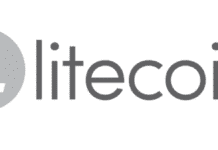What is Litecoin (LTC)
Last Updated: 30th October 2018
Launched in 2011 by former Google employee, Charlie Lee, Litecoin was created with the intention of being the silver to Bitcoin's gold. It is an open-source, peer-to-peer digital currency that can be used for instant and near costless transactions. Litecoin is a fork of the Bitcoin protocol, and thus, possesses many similarities. However, the main differences between the two protocols include:
- Coin Limit
- Proof-of-work (PoW) algorithm
- Block generation time
- Block reward
Coin limit – Litecoin has a limiting supply of 84 million coins, which is in contrast to Bitcoin’s 21 million.
Proof-of-work – Litecoin utilizes the algorithm, scrypt, for it’s proof-of-work consensus mechanism wherein a miner must solve a cryptographic puzzle in order to add a block to the Litecoin blockchain. Conversely, the Bitcoin protocol uses SHA-256 as its algorithm for its proof-of-work consensus mechanism. Both hash functions are computationally intensive as they both require raw computational power in order to generate a large number of possible solutions for their respective functions. However, what differentiates the scrypt function, from the SHA-256 function, is that it is also memory intensive. scrypt is memory intensive because as well as being able to generate numbers rapidly, these generated numbers are stored in the Random Access Memory (RAM) of the processor, which then need to be accessed continuously before submitting a result.
The rationale behind using the scrypt algorithm was to prevent what are known as ASICs from dominating Litecoin’s hash rate. ASICs are computationally superior to CPUs and GPUs, i.e. they are able to generate more hashes per second. Therefore, miners who use any other device other than an ASIC to mine for a cryptocurrency, are put at a disadvantage. However, the scrypt mining algorithm was introduced to prevent this from taking place because the algorithm is memory intensive; ASIC miners were not well-suited to mine scrypt, and thus, miners who used CPUs and GPUs could remain competitive.
However, as time passed, ASICs were eventually developed for the scrypt algorithm which has resulted in it dominating the hash rate of the Litecoin protocol.
Block generation times – The Litecoin protocol has a block generation time of 2.5 minutes compared to a Bitcoin block generation time of 10 minutes. Block generation time refers to, on average, the length of time it takes for a miner to add a block to the blockchain. If it takes miners slightly longer than the block generation time to add a block to the their respective blockchain, then every 2016 blocks, both the Litecoin and Bitcoin protocols will reduce the difficulty in order to compensate. The opposite holds true if miners were able to add blocks faster than the block generation time.
The net result of Litecoin’s faster block generation time is that transactions placed on the Litecoin protocol, when compared to transactions placed on the Bitcoin protocol, will be processed more quickly.
Block reward – Litecoin currently has a block reward of 25 LTC where as Bitcoin currently has a block reward of 12.5 BTC. Block rewards are given to miners in exchange for validating and adding transactions in the form of blocks to a blockchain. They exist as a mechanism for incentivizing miners to secure blockchain-based protocols. Both protocols experience what are known as halving events, which will eventually lead to miners no longer being rewarded in the form of a digital currency for validating and adding transactions to the blockchain. At this point, the only incentive mechanism that will exist for miners to play a role in securing these blockchain networks will be in the form of collected transaction fees.
Segregated Witness (SegWit) & Lightening Network
The Litecoin protocol has within it a piece of technology known as, segregated witness (SegWit). SegWit is a soft fork method than can be used to increase the capacity of a block by removing signature data from transactions. This has the effect of freeing up space in a block, which allows for more transactions to be included in a block. The implementation of SegWit into the Litecoin protocol has consequently allowed for another piece of technology known as the, Lightning Network, to be implemented. The Lightening Network is a second layer protocol that allows users to make instant transactions with each other through the use of peer-to-peer payment channels. The Lightening Network was implemented as a possible scaling solution to the problems faced by blockchain-based digital currencies such as Litecoin and Bitcoin. The scaling problem, simply put, is that blockchain-based currencies will fail to support the millions of transactions that would ensue if the digital currencies were ever to reach mass adoption. Implementation of the Lightening Network is one solution that is currently being tested as a possible solution to the problem.
Additional resources
More information on the Litecoin protocol can be found on the Litecoin website.
Litecoin block explorer as well as Bitinfocharts can be used to track various usage statistics of the Litecoin network.



